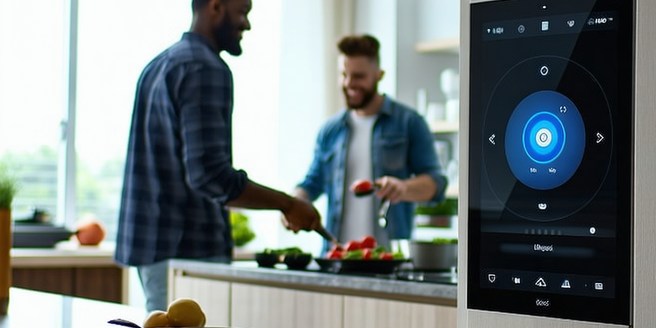Smart Home Integration

Understanding Smart Home Technology
Smart home technology widely transforms how we interact with our living spaces. By integrating advanced systems, everyday tasks become increasingly efficient, cost-effective, and environmentally friendly. From automated lighting and climate control to enhanced security solutions, smart home technology seamlessly blends convenience with innovation. At its core, it employs interconnected devices that communicate over a network, often via Wi-Fi, allowing centralized control through a single application. Users can operate appliances remotely, set schedules, and monitor energy usage. These technologies also provide invaluable data insights, helping homeowners make informed decisions that improve lifestyle and sustainability. As technology continues to advance, the potential for smart home systems to innovate domestic life becomes virtually limitless, reshaping the ways we perceive functionality, security, and comfort in modern homes.
Choosing the Right Smart Devices
Selecting the right smart devices for your home is crucial for a successful integration. Begin by identifying your needs and priorities, whether it’s enhancing security, optimizing energy consumption, or improving convenience. Assess compatibility with existing systems to ensure seamless operation. Popular options include smart thermostats for efficient climate control, smart locks and cameras for security, and voice assistants for hands-free control. Consider devices that offer broad compatibility, regular software updates, and a reputable support system. Furthermore, prioritize user-friendly devices with reliable interfaces and easy-to-use features. Research thoroughly, read user reviews, and consult expert recommendations to make informed choices. By investing in high-quality, compatible technology, you ensure a scalable and customizable smart home ecosystem that enhances life and fits effortlessly into your lifestyle.
Setting Up a Central Hub for Control
A central hub serves as the brain of a smart home system, controlling a variety of connected devices through a single interface. To establish a central hub, first, ensure the hub is compatible with the range of devices you plan to use within your ecosystem. Common hub solutions include integrated platforms from major tech companies and protocols designed to unify device communication. Configuring this hub effectively requires a stable internet connection, careful customization according to household needs, and routine software updates to maintain efficiency. The central hub simplifies device management, enabling users to control their systems through a single app or interface, promoting an interconnected experience. As an essential component in smart home management, the hub delivers seamless operation, energy efficiency, and enhanced security within a unified ecosystem.
Ensuring Device Compatibility
Ensuring compatibility between various smart devices is crucial in building an effective and cohesive smart home ecosystem. Begin by selecting devices that adhere to industry standards and support popular connectivity protocols such as Zigbee, Z-Wave, or Wi-Fi. It’s essential to check for compatibility both with any existing devices and with your central control hub. Many smart devices also come with online databases or compatibility lists that prospective buyers can peruse. When integrating multiple devices, consider using platforms that offer broad compatibility, such as those that support third-party integrations or come with flexible voice command options. Regularly updating your devices’ firmware will also help maintain compatibility and security. By choosing compatible devices, homeowners can prevent connectivity issues and enjoy a seamless smart home experience that operates efficiently.
Maximizing Security in Your Smart Home
Security is paramount in a smart home environment, as these systems can be vulnerable to cyber threats. Start by securing your network with strong, unique passwords and regularly updating them to protect against unauthorized access. Implement two-factor authentication for added protection on your devices and accounts. Ensure firmware for all smart devices is up to date, as manufacturers release updates that patch potential security vulnerabilities. Consider using a separate guest network for smart devices, preventing potential attackers from accessing personal data. Monitoring tools can alert you to unusual behavior, allowing fast action if necessary. By adopting these security measures, homeowners can enjoy the conveniences of a smart home while keeping their network and data safe from malicious activity.